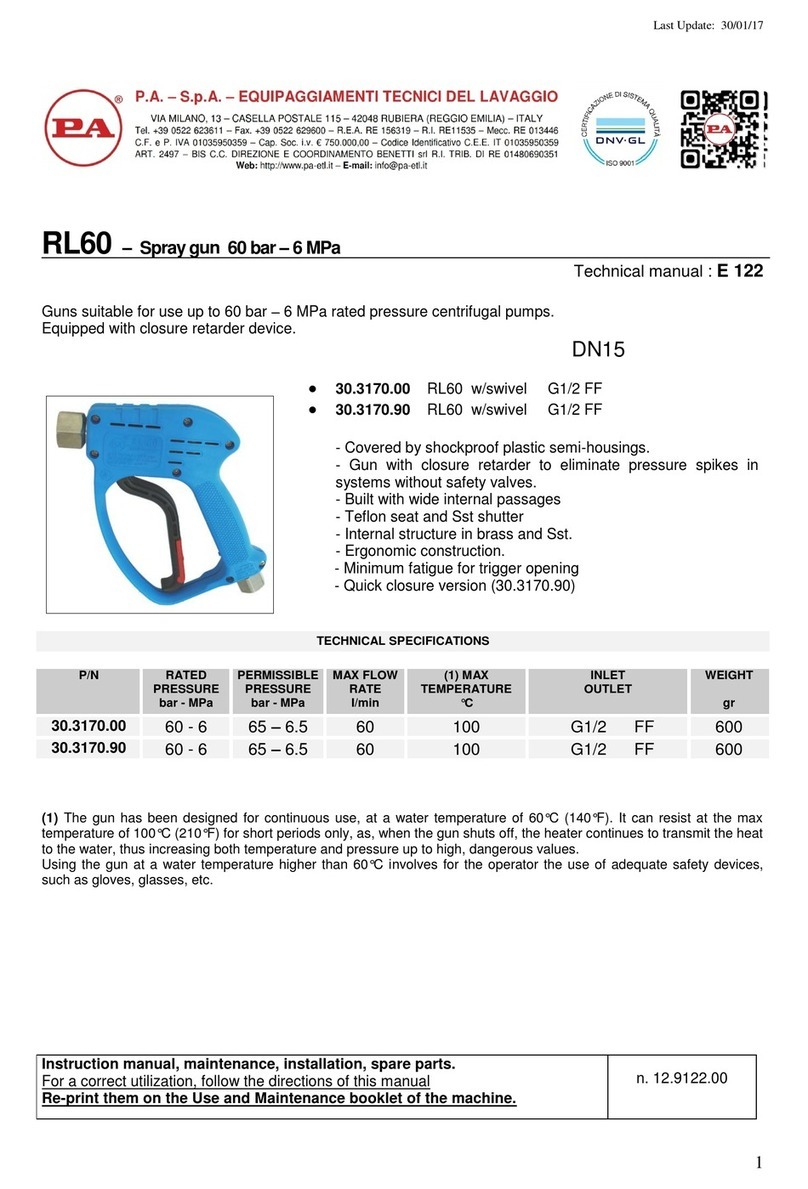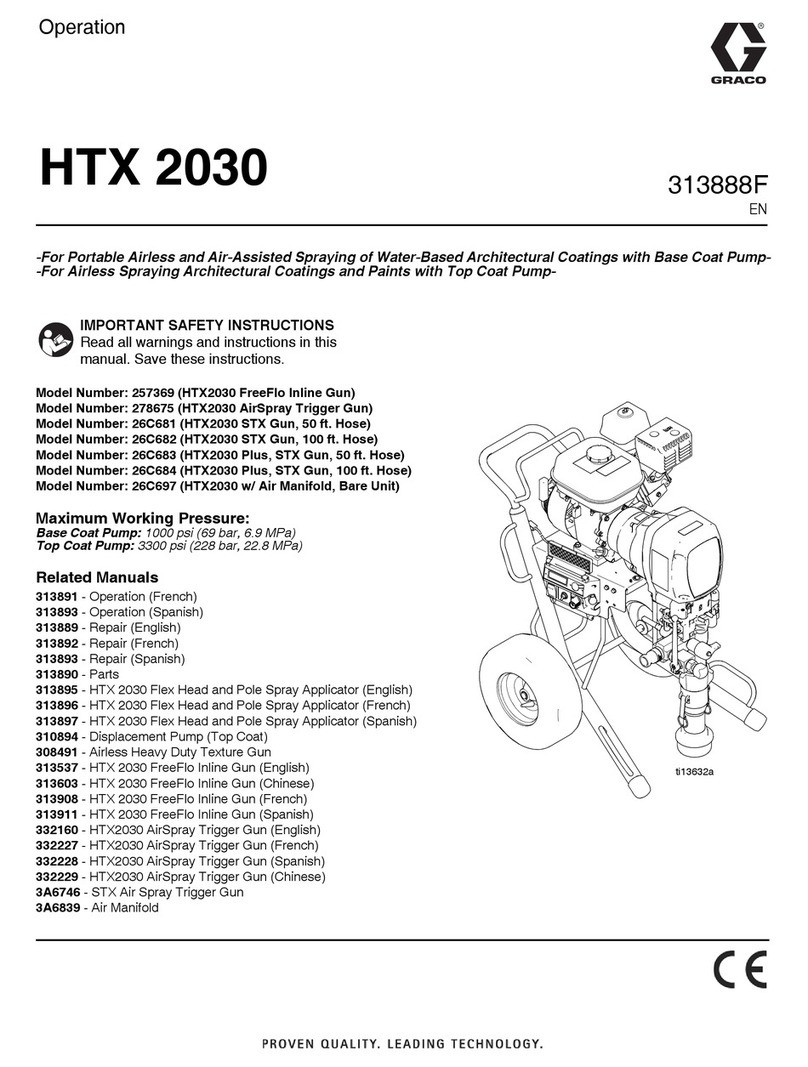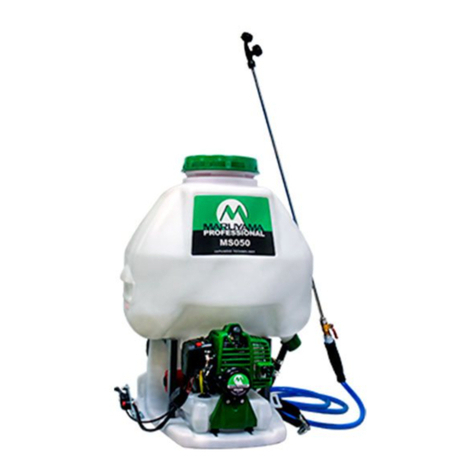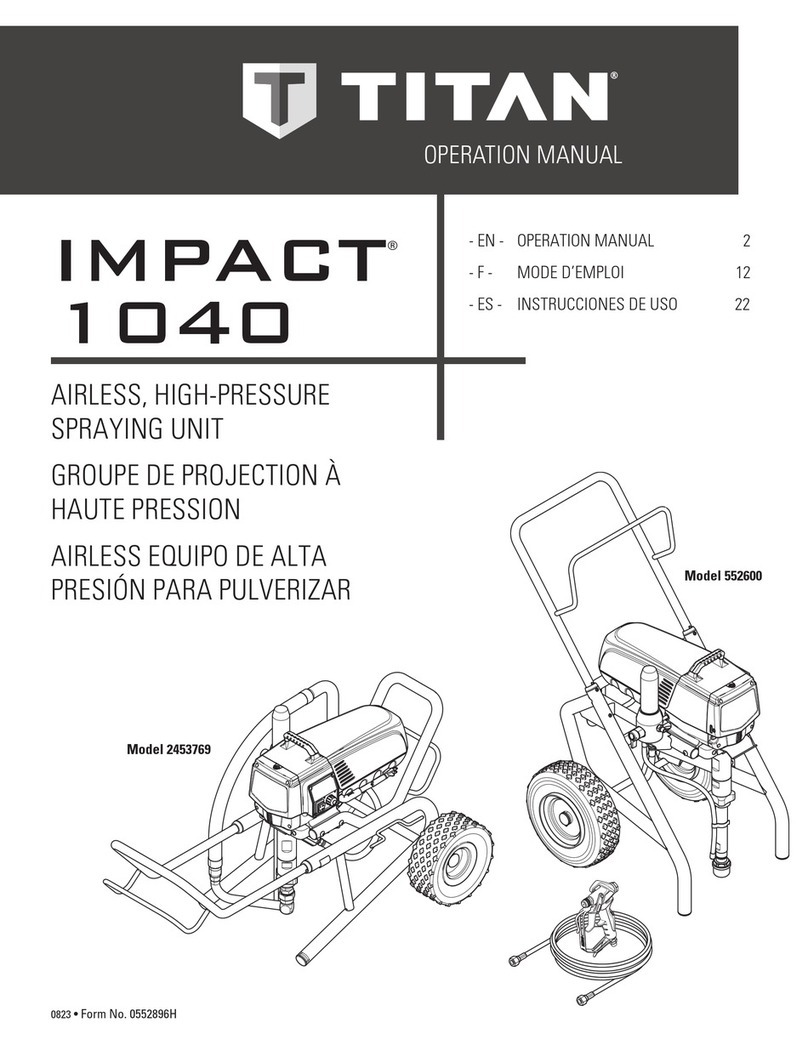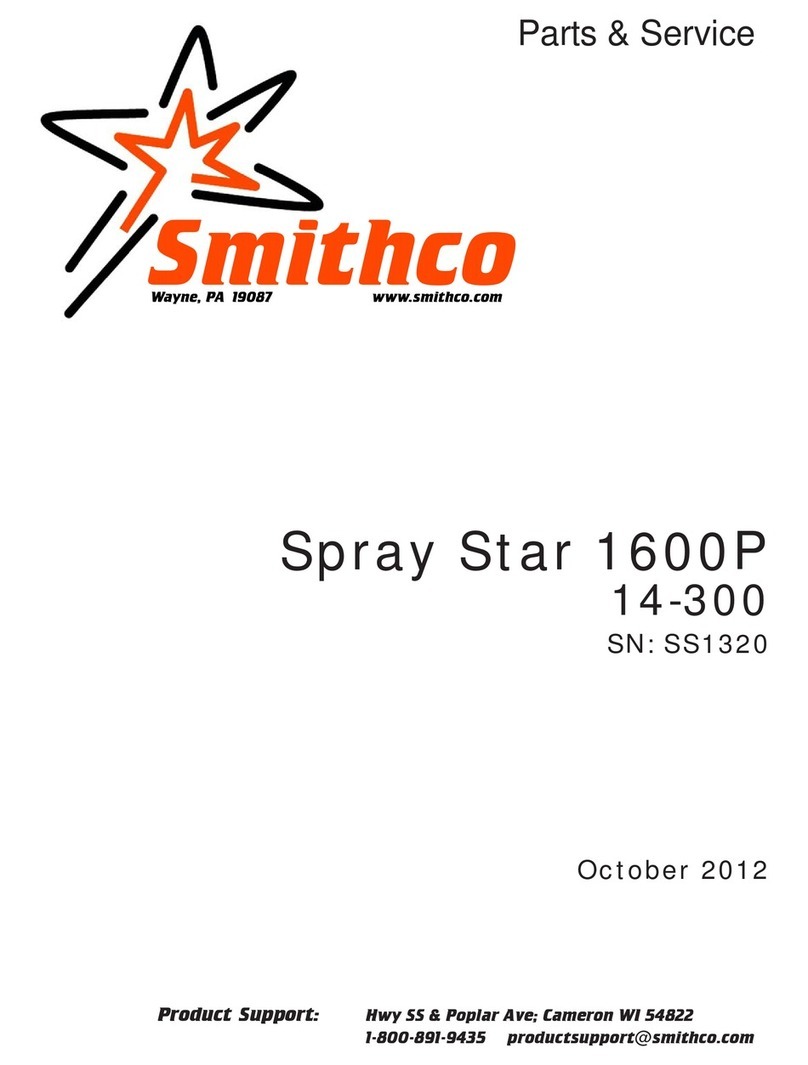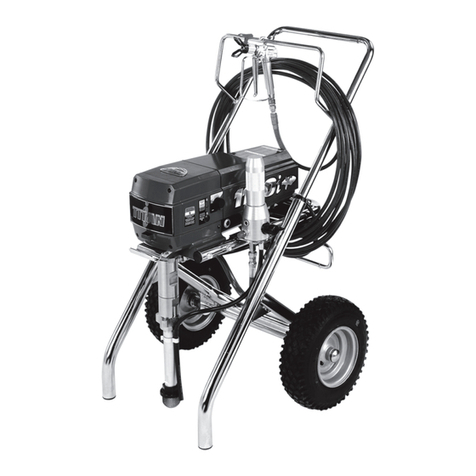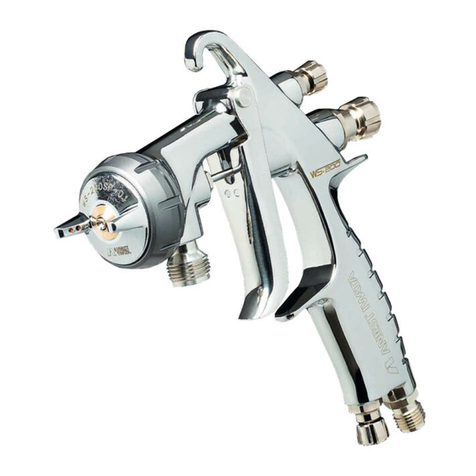CROMAKIT RSLAB-7 User manual

Junio 2011
- 1 -
MANUAL DE INSTRUCCIONES
AGITADOR ORBITAL O VAIVÉN
RSLAB-7 (2,5kg) agitador orbital, ref. 50685030
RSLAB-7 (2,5kg) agitador vaivén, ref. 50685130
RSLAB-7PRO (7,5kg) agitador orbital, ref. 50685080
RSLAB-7PRO (7,5kg) agitador vaivén, ref. 50685180

Junio 2011
- 2 -
ÍNDICE
Introducción y Garantía p.3
1. Normas de seguridad p.3
2. Uso p.4
3. Inspección p.4
4. Test de puesta en marcha p.4
5. Control y programación p.4
a. Control p.4
b. Programación del tiempo de trabajo P.5
c. Programación de la velocidad de agitación p.5
6. Modos de trabajo p.5
a. Modo A p.5
b. Modo B p.6
c. Paso de modo A a modo B p.6
7. Carga máxima p.7
8. Problemas y soluciones p.7
9. Mantenimiento y limpieza p.7
10. Normas p.7
11. Característica técnicas p.8
12. Accesorios p.8

Junio 2011
- 3 -
Este es el manual de instrucciones de los agitadores de vaivén RSLAB-7 y orbitales RSLAB-7PRO. Léalo
atentamente antes de su uso. Las instrucciones y procedimientos deben ser cuidadosamente seguidos y el
usuario debe prestar especial atención a los posibles riegos asociados al empleo de los equipos.
En caso de necesidad, contacte con su distribuidor para que le proporcione ayuda y los consejos necesarios para
el buen uso de los equipos. Para ello, el usuario debe proporcionar el número de serie del equipo, describir los
problemas encontrados, los procedimientos que han sido realizados para tratar de resolver estos problemas y
los datos de la persona de contacto.
Los agitadores RSLAB disponen de una garantía de 12 meses desde la fecha de factura para defectos de material
y fabricación en caso de un uso normal descrito en este manual. Esta garantía no se aplica al agitador o a
cualquier pieza dañada como consecuencia de una mala instalación, malas conexiones, mal uso, un accidente o
condiciones anormales de uso.
Contacte su distribuidor para cualquier reclamación en garantía. Un envío solo es posible previo acuerdo con el
distribuidor. En este caso, es necesario adjuntar un correo explicando los problemas detectados.
1- Normas de seguridad
Atención !
Lea atentamente este manual de uso antes de utilizar el equipo y siga las normas de seguridad.
Asegúrese el uso del aparato por personal cualificado.
Red eléctrica protegida!
Asegúrese que el equipo está conectado a toma de tierra antes de su uso.
Emplee vestuario de seguridad para protegerse de los riesgos de salpicaduras, de roturas ligadas a la
agitación de material de vidrio y de enganches del vestuario, cabello o cuerpo por el equipo.
Siga las normas de seguridad indicadas en este manual y en general las normas de seguridad
profesionales para evitar cualquier accidente.
El usuario no debe tocar las partes móviles del equipo. Debe proteger las manos y los dedos cuando el
equipo se encuentra en funcionamiento.
Coloque el aparato sobre una superficie plana, estable, limpia, seca y resistente al fuego. No utilizar el
equipo en atmósfera explosiva, con materiales peligrosos o bajo el agua.
Asegúrese que durante la agitación no se produzcan demasiadas salpicaduras. Reduzca la velocidad de
agitación si el equipo no funciona correctamente.
Antes de cada uso, verifique siempre el estado del equipo y los accesorios. No utilice componentes
dañados. La seguridad no puede ser garantizada más que con el uso de los accesorios mencionados en
el capítulo 9. Los accesorios deben ser correctamente conectados al equipo y no deben desprenderse.
Es imprescindible desconectar la corriente eléctrica del equipo antes de la instalación de los
accesorios.
Evite cualquier golpe o impacto sobre el equipo y sus accesorios.
No cubra el equipo y manténgalo alejado de cualquier campo magnético.
El voltaje indicado en el equipo debe corresponder al de la red eléctrica utilizada.
El equipo solo puede ser manipulado por personal cualificado y debe ser desenchufado antes de una
intervención.

Junio 2011
- 4 -
2- Uso
El equipo está diseñado para la mezcla de líquidos en colegios, laboratorios o industrias. Los agitadores
RSLAB-7 y RSLAB-7PRO son utilizados para mezclar líquidos contenidos en frascos, matraces o tubos de
ensayo, con un peso total de 2,5kg o 7,5kg. El equipo no se recomienda para su uso doméstico o en
una atmósfera que pudiera ser peligrosa para el usuario o el equipo, según lo indicado en el capítulo 1.
3- Inspección
Saque el equipo de su embalaje cuidadosamente y compruebe si hay algún daño debido al transporte.
Si es así, contacte con el distribuidor que le suministró el equipo.
Si el equipo esta dañado, no se debe conectar a la red eléctrica.
Los RSLAB-7 y RSLAB-7PRO se suministran con los siguientes accesorios:
-Agitador 1ud
-Cable de red 1ud
-Manual 1 ud
4- Test de puesta en marcha
El voltaje indicado en el equipo debe corresponder al de la red eléctrica utilizada.
Asegúrese que el equipo está conectado a toma de tierra antes de su uso.
Enchufe el cable a la red y encienda el equipo.
En pantalla se muestra la velocidad límite de seguridad y a continuación el modo operativo.
Gire el mando de regulación de la velocidad de agitación hasta alcanzar el valor deseado.
Pulse sobre este mismo mando y el equipo pone en marcha la agitación.
Pulse de nuevo este botón para parar la agitación.
Si las operaciones descritas anteriormente se desarrollan sin problemas, el equipo está listo para su
uso según las indicaciones de este manual.
Si estas operaciones no se desarrollan correctamente, el equipo está dañado. Póngase en contacto con
el Servicio Técnico de sus distribuidos.
Para mejorar la estabilidad del equipo, ajuste para ello el pie con
ayuda de una llave.
5- Control y programación
a. Control

Junio 2011
- 5 -
Elementos Descripción
Speed Knob Selecciona la velocidad de agitación girando el mando e
inicia/detiene la agitación pulsando sobre él
Time Knob Selecciona el tiempo de trabajo girando el mando e inicia/detiene
el trabajo pulsando sobre él
Shaking table Plato de agitación para los recipientes
LCD Speed / LCD Time Visualización de parámetros de trabajo
Coloque el equipo sobre una superficie estable y segura y enchufe el equipo.
Encienda el equipo pulsando sobre el interruptor general situado en el lado izquierdo.
El equipo inicia el autotest. Tras la inicialización, el equipo muestra los parámetros de velocidad y
tiempo de trabajo.
Gire el mando de regulación de la agitación hacia la izquierda para programar la velocidad de agitación.
Pulse sobre él y la señal situada sobre la izquierda de la pantalla deja de parpadear. La función de
agitación se pone a continuación en marcha. Pulse sobre el mando nuevamente y la señal en pantalla
vuelve a parpadear. La función de agitación se detiene en ese momento.
Gire el mando de regulación del tiempo de trabajo hacia la izquierda para programar el tiempo de
agitación. Pulse sobre el mando y la señal a la derecha de la pantalla deja de parpadear. La función del
tiempo se activa en ese momento. Pulse sobre este mando y la señal a la derecha vuelve a parpadear.
La función de tiempo se vuelve a detener.
b. Programación del tiempo de trabajo
El equipo puede trabajar en modo continuo o por tiempo programado (máx. 19h59mn). La
programación del tiempo de trabajo se realiza mediante el mando situado en la parte derecha. Si el
equipo se apaga y enciende nuevamente, la programación del tiempo desaparece. Durante el proceso
de funcionamiento del tiempo y velocidad de agitación programados, el usuario puede activar estas
dos funciones mediante los mandos de regulación, según se indica a continuación:
- Pulsando sobre el mando de regulación del tiempo, la agitación y el tiempo de trabajo se detienen.
Pulsando de nuevo el mando, las dos funciones se reactivan y el equipo retoma el tiempo de trabajo
programado.
- Pulsando sobre el mando de regulación de la velocidad de agitación, la agitación y el tiempo de
trabajo se detienen. Pulsando sobre el mando de regulación de la agitación, la función de agitación se
reactiva pero no la función de tiempo (la parte derecha de la pantalla parpadea). Para reactivar la
función tiempo, pulse sobre el mando de regulación de tiempo y el equipo retomara el tiempo de
trabajo programado.
c. Programación de la velocidad de agitación
El usuario puede programar y aumentar la velocidad de agitación girando el mando de regulación
correspondiente.
El modo continuo es activado pulsando sobre el mando de la izquierda sin programación del tiempo de
trabajo. La agitación se detiene pulsando nuevamente sobre este mando.
Aumentar la velocidad de agitación girando el mando progresivamente con el fin de evitar sacudidas
del equipo.
La velocidad de agitación puede ser modificada en cualquier momento.
6- Modos de trabajo
a. Modo A

Junio 2011
- 6 -
Este modo de trabajo es el registrado por defecto en fábrica.
Encienda el equipo mediante el interruptor general. Las funciones de agitación y tiempo están
desactivadas. La pantalla muestra la velocidad de agitación y el tiempo programados. Estos valores
pueden ser modificados activando las funciones de agitación y tiempo.
Tras encender el equipo, la pantalla muestra los datos siguientes:
La parte izquierda indica « SAF » y la parte derecha indica la velocidad límite de agitación (rpm), que
puede ser programada pulsando y girando al mismo tiempo el mando de regulación.
La parte izquierda indica entonces « StA » y la parte derecha indica el modo de trabajo A o B durante
aproximadamente 2 segundos.
A continuación en la parte izquierda se muestra el valor de agitación programado y en la parte derecha
el tiempo de trabajo programado. Girando los mandos respectivos, los valores pueden ser modificados.
Pulsando sobre cualquiera de los mandos, el equipo comienza su funcionamiento según la velocidad
programada. La pantalla muestra entonces la velocidad de agitación y el tiempo de trabajo restante.
Cuando el tiempo de trabajo llega a 0, la agitación se detiene. Pulsando solamente sobre el mando de
agitación, el equipo trabajará en modo continuo (la función tiempo está desactivada).
b. Modo B
Cuando el equipo se pone en marcha y los valores de agitación y tiempo se ponen a cero, el usuario
puede reprogramarlos.
La velocidad límite de agitación no puede ser modicada.
Cuando el equipo se apaga y vuelve a encenderse, el equipo no arrancará automáticamente en el
modo B.
Una vez encendido el equipo y seleccionado el modo de trabajo, la pantalla muestra los datos
siguientes:
La parte izquierda indica « SAF » y la parte derecha indica la velocidad límite de agitación (rpm), que no
puede ser modificado.
La parte izquierda indica entonces « StA » y la parte derecha indica el modo de trabajo A o B durante
aproximadamente 2 segundos.
Sobre la parte izquierda se muestra a continuación el valor de agitación programado y en la parte
derecha el tiempo de trabajo programado. Programar entonces la velocidad de agitación y el tiempo
de trabajo.
Pulsando sobre cualquiera de los mandos, el equipo comienza su funcionamiento según la velocidad
programada. La pantalla muestra entonces la velocidad de agitación y el tiempo de trabajo restante.
Cuando el tiempo de trabajo llega a 0, la agitación se detiene.

Junio 2011
- 7 -
c. Pasar de Modo A a modo B
Para pasar del modo A al modo B, es necesario antes de la puesta en marcha del equipo, pulsar
simultáneamente sobre los dos mandos durante aproximadamente 5 segundos. Selecciones A o B.
7- Carga máxima
Para garantizar la seguridad del usuario, los agitadores no deben sobrepasar su carga máxima
permitida: 2,5kg o 7,5kg.
Asegúrese que el plato de agitación está siempre limpio y a nivel.
Asegúrese que cada recipiente está correctamente colocado y mantenido en su lugar de agitación.
8- Problemas y soluciones
El equipo no se enciende: -Verifique que el cable de alimentación esté enchufado
- Verifique que el fusible no esté quemado o dañado.
La velocidad de agitación no alcanza el valor solicitado:
- Verifique que no haya sobrecarga del equipo.
El motor no se activa al pulsar sobre cualquiera de los botones:
- Verifique que el tiempo de trabajo no esté programado a
0.
9- Mantenimiento y limpieza
Un buen mantenimiento permite conservar el equipo en buen estado y alargar su vida útil.
Asegúrese que ni agua ni detergente se introduzcan en el equipo durante la limpieza.
Desenchufe el equipo para su limpieza.
Utilice los detergentes siguientes:
- Para los colorantes: Alcohol isopropílico
- Para los materiales de construcción: Agua+Detergente/Alcohol isopropílico
- Para los cosméticos: Agua+Detergente/ Alcohol isopropílico
- Para los alimentos: Agua+Detergente
- Para los carburantes: Agua+Detergente
Use guantes adaptados durante la limpieza del equipo.
Antes de usar algún otro método de limpieza o descontaminación, el usuario debe consultar al
distribuidor para evitar dañar el equipo.
No sumergir el aparato eléctrico en el producto durante su limpieza.
El agitador es un aparato electrónico sofisticado, protéjalo de cualquier golpe. Para el transporte, el
equipo debe estar limpio y colocado en su embalaje original y, en caso contrario, utilice un embalaje
adaptado para el transporte.
El equipo debe estar correctamente limpio y descontaminado antes de su envío al distribuidor para su
reparación.
Si el equipo no va a ser utilizado durante un periodo largo de tiempo, apáguelo y desenchúfelo,
límpielo y colóquelo en un lugar limpio, seco y a temperatura ambiente.

Junio 2011
- 8 -
10- Normas
El equipo se ajusta a las normas de seguridad estándar:
EN61010-1
UL3101-1
CAN/CAS C22.2(1010-1)
EN 61010-2-10
El equipo se ajusta a las normas EMC:
EN61326-1
11- Características técnicas
Voltaje 100-240 VAC Visualización velocidad Pantalla LCD
Frecuencia 50/60 Hz Programación tiempo Si
Potencia 30W Visualización tiempo Pantalla LCD
Movimiento de agitación Orbital / Vaivén Tiempo de trabajo 1-1199min
Diametro orbital 10mm (RSLAB-7PRO)
4,5mm (RSLAB-7) Modo de trabajo Continuo/ Programado
Carga máxima (con accesorios) 7,5kg (RSLAB-7PRO)
2,5kg (RSLAB-7) Dimensiones 420x370x100mm (RSLAB-7PRO)
340x300x100mm (RSLAB-7)
Tipo de motor Peso 13,5kg (RSLAB-7PRO)
8,1kg (RSLAB-7)
Potencia de entrada del motor 28W Temperatura ambiente permitida 5-40°C
Potencia de salida del motor 15W Humedad relativa permitida 80%
Tiempo de funcionamiento admisible 100% Clase de protección DIN 60529 IP21
Velocidad de agitación
100-350rpm (50685180)
100-500rpm (50685080)
100-350rpm (50685130)
100-800rpm (50685030)
Salida RS232 Si
12- Accesorios
Referencia Descripción
90685081 Plato con 4 barras
(RSLAB-7PRO)
90685082
Plato para
adaptadores matraz
Erlenmeyer
(RSLAB-7PRO)
90685090
Plataforma
antideslizante con 8
bandas elásticas
(RSLAB-7PRO)
90685031 Plato con 3 barras
(RSLAB-7)

Junio 2011
- 9 -
90685032
Plato para
adaptadores matraz
Erlenmeyer
(RSLAB-7)
90685091
Plataforma
antideslizante con
3+3 bandas elásticas
(RSLAB-7)
90685001
Clip de fijación para
matraz Erlenmeyer
25ml
90685002
Clip de fijación para
matraz Erlenmeyer
50ml
90685003
Clip de fijación para
matraz Erlenmeyer
100ml
90685004
Clip de fijación para
matraz Erlenmeyer
200/250ml
90685005
Clip de fijación para
matraz Erlenmeyer
500ml
90685010 Barra universal para
90685081
90685011 Barra universal para
90685031
Número de clips de fijación posibles por agitador:
25ml 50ml 100ml 250ml 500ml
RSLAB-7 36 18 18 5/8* 5/8*
RSLAB-7PRO 56 28 28 13 9
* Utilizando solamente 3 puntos de fijación y no 4

Junio 2011
- 10 -
Posicionamiento de los clips de fijación sobre el equipo RSLAB-7:

Junio 2011
- 11 -
Posicionamiento de los clips de fijación sobre el equipo RSLAB-7PRO :

Junio 2011
- 1 -
INSTRUCTIONS MANUAL
LINEAL AND ORBITAL DIGITAL SHAKERS
RSLAB-7 (2,5kg) orbital shaker, code 50685030
RSLAB-7 (2,5kg) lineal shaker, code 50685130
RSLAB-7PRO (7,5kg) orbital shaker, code 50685080
RSLAB-7PRO (7,5kg) lineal shaker, code 50685180

Junio 2011
- 2 -
INDEX
1. Safety Instructions p.3
2. Use p.4
3. Inspetion p.4
4. Trial Run p.4
5. Control and Set p.4
a. Control p.4
b. Set Time P.5
c. Setting Speed p.5
6. Operating Modes p.5
a. Mode A p.5
b. Mode B p.6
c. Switching the Mode p.6
7. Supported load p.7
8. Trouble shooting p.7
9. Maintenance and Cleaning p.7
10. Normas p.7
11. Technical Data p.8
12. Accessories p.8

Junio 2011
- 3 -
This is the User Manual of the Lineal and Orbital Digital Shakers RSLAB-7 and 7PRO. In case of need, please
contact your distributor and he will help you and advise for the correct use of the equipment. It will be required
that the user provide the serial number of the equipment, describe the problems, the procedures made in
order to solve the problems and the person contact data.
RSLAB stirrers have a 12 months warranty from the date of the invoice for manufacture faults in case of a
correct use as described in this manual. This warranty is not applied to the stirrer or any spare part as
consequence of a wrong installation, wrong connections, incorrect use, accident o conditions not according to
the proper use.
Contact your distributor for any complaint under warranty. The shipment only is possible by previous
agreement with the distributor. In this case, it is required attached the mail explaining the problems detected.
1- Safety Instructions Normas de seguridad
Warning !
•Read the operating instructions completely before use and follow the safety instructions.
Ensure that only trained staff work with the instrument.
Protective ground contact!
Make sure the socket must be earthed (protective ground contact) before use.
Emplee vestuario de seguridad para protegerse de los riesgos de salpicaduras, de roturas ligadas a la
agitación de material de vidrio y de enganches del vestuario, cabello o cuerpo por el equipo.
Use the instrument following the safety instructions and profession safety rules to avoid any accident.
Users are not allowed to touch moving parts of he instrument to avoid any accidents. Pay attention to
protect hands or fingers from rolling when moving the instrument.
Set up the instrument in a spacious area on an stable, clean, non-slip, dry and fireproof surface. Do not
operate the instrument in explosive atmospheres, with hazardous substances or under water.
Observe the vessel on the shaking table for medium splashing out of liquid when setting the motor
speed. Reduce the motor speed if the instrument is not running smoothly.
No utilice componentes dañados. Safe operation is only guaranteed with the accessories described in
the “Accessories” chapter and by following the operating instructions in full. Always disconnect the
plug before fitting accessories. Check the instrument and accessories beforehand for damage each
time you use them. Do not use damaged components
Do not cover the instrument. Protect the instrument and accessories from bumps and impacts. Keep
away from high magnetic field.
The operating voltage required as stated on the instrument and voltage in the supply network must
match.
The instrument may only be opened by trained technicians. And always disconnect the plug
beforehand.
2- Use
The instrument is designed for mixing or shaking liquids in schools, laboratories or factories. Shakers
RSLAB-7 y RSLAB-7PRO is suitable for usage in various attachments for mixing liquids in bottles, flasks,

Junio 2011
- 4 -
test tubes for a maximum supported weight of 7.5 kg (330) and 2.5Kg (180). This instrument is not
suitable for use in residential areas or other areas that may cause danger to the user or instrument as
mentioned in chapter 1.
3- Inspetion
Unpack the instrument carefully and check for any damages which may have arisen during transport. If
it happens, please contact distributor for technical support.
If there is any apparent damage to the system, please do not plug it into the power line.
RSLAB-7 and RSLAB-7PRO are supplied with the following items:
-Stirrer 1ud
-Power cable 1ud
-User manual 1 ud
4- Trial run
Make sure the required operating voltage and power supply voltage match.
Ensure the socket is securely earthed.
Plug in the power cableand power ON the instrument.
LCD displays the safe rotary speed limit and operating mode.
Turn the speed knob to set the rated rotary speed
Press the speed knob. And the shaking function is switched ON.
Press the motor regulation knob again. and the shaking function is switched OFF.
If these operations above are normal, the instrument is ready to operate following the
operation” chapter.
If these operations are not normal, the instrument may be in security protection state or
be damaged. Please contact with distributor Technical support.
You can improve the stability of the instrument with the adjustable
feet.
5- Control and set
a. Control

Junio 2011
- 5 -
Items Decription
Speed Knob Set the rated rotary speed. “rotation” is switched ON or OFF via
pressing the knob.
Time Knob Set working time. “rotation” is switched ON or OFF via pressing
the knob
Shaking table Plato de agitación para los recipientes
LCD Speed / LCD Time Set working time. “rotation” is switched ON or OFF via pressing
the knob
Put the instrument on stable and safe place and plug in the mains power.
Turn ON the mains switch on the left panel. The instrument starts self-test. The instrument shows rated
speed and time after initialization..
Turn the speed knob on the left side to set the rated speed.Press the speed knob and characters on the
left LCD do not flash any more, and the shaking function is switched ON.Press the speed knob again
and characters on the left LCD begin to flash, and the shaking function is switched OFF.
Turn the time knob on the left side to set the rated time. Press the time knob and characters on the
LCD do not flash any more, and the timing function is switched ON. Press the time knob again and
characters on the right LCD begin to flash, and the timing function is switched OFF..
b. Set time
The equipment can work in continuous mode or time/continuous (max. 19h59m). The setting of the
work time is made through the control in the right side. In case the equipment turns off and on again,
the setting disappears. During the process of running at the time and speed set up, the user can
activate these two functions through the regulation controls, as indicate below:
- Pressing the time knob,the speed and the time will stop. Pressing the time knob again, restart the
shake function, the time will use the pre-set time.
- Pressing the speed knob,the speed and the time will stop; Pressing the time knob again, restart
the shake function, the time not(There are flashing on the right of the LCD ),pressing the time knob
again restart the time function. The time will use the pre-set time..
c. Setting speed
User can set and increase the shaking speed by turning the regulation control.
The continuous mode is activated pressing the control on the left without time setting. The shaking
stops pressing again this control.
Increasing the shaking speed by turning the control progressively in order to avoid shocks in the
equipment.
Shaking speed can be modified at any momento.
6- Operating modes
a. Mode A
Operating mode A is the default mode set in factory.
After turning ON the instrument with the mains switch, the shaking and timing functions are turned
OFF. The LCD displays the set time and speed values. They are adopted or varied when the
corresponding functions are turned ON.
After turning ON the instrument, the following process will be shown on the display:
The left LCD displays “SAF” and the right displays the upper speed limit (rpm)which can be set by
pressing the speed knob and turning at the same time.

Junio 2011
- 6 -
The LCD displays run modes “StA”、“A” or “B” for about 2 seconds.
The set or stored speed value is shown in the left display, and the set or stored time value is shown in
the right display. Turn the speed knob and time knob can set the speed and time.
After pressing the speed knob or time knob, the instrument begins to run at the set speed. The actual
speed and time remaining are shown in the LCD. If the remaining has reached zero, the shaker stops its
motion. Pressing the speed knob alone, the instrument will work at continuous mode(The time
function is OFF)
b. Mode B
When the instrument is turned ON and values for speed and time are erased to zero, users can set..
The upper speed limit that has been set is taken over from operating mode A and cannot be modified..
After the power has been turned OFF, the instrument will no longer automatically start up in operating
Mode B by itself.
After turning ON the instrument and selected run mode, the following process will be shown on the
display.
The left LCD displays “SAF” and the right displays the upper speed limit (rpm)which cannot be
changed.
The LCD displays run modes “StA” for about 2 seconds.
The set speed value is shown in the left display, and the set time value is shown in the right display.
Then set the motor rotary speed and time.
After pressing the speed knob or time knob, the instrument begins to run at the set speed. The actual
speed and time remaining are shown in the LCD. If the remaining has reached zero, the shaker stops
its motion.
c. Switching the mode
Hold down both knobs and turn ON the instrument with the mains switch. After about 5 second, you
can let go of the knobs..
7- Supported load
In order to ensure safe, the shaker must only be operated within the supported: 2,5kg or 7,5kg.
Make sure the holding surface of the shaker is always clean and level. Ensure the individual shaking
vessels must be placed evenly and fastened securely in the middle of the shaking table no matter one
or multiple shaking vessels are placed.

Junio 2011
- 7 -
8- Trouble shooting
The instrument doesn’t work: - Check whether the power cable fitted well
- Check whether the fuse is broken
The speed cannot reach set value:
- Check whether it is overloaded.
The motor does not start via pressing the speed knob and time knob:
- Check whether the time is set to zero.
9- Maintenance and cleaning
Use and maintain the instrument in right way to keep it in good operating state in order to lengthen its
life time and avoid the damage to the instrument. Only use the cleaning agents which have been
approved by manufacturer to clean the instrument.
Only use cleanser that we advised as below:
- Dyes: Isopropyl alcohol
- Construction materials: Water containing tenside / isopropyl alcohol
- Cosmetics: Water containing tenside /isopropyl alcohol
- Foodstuffs: Water containing tenside
- Fuels: Water containing tenside
For materials which are not listed, please request information from your supplier. Before using another
than the recommended method for cleaning or decontamination, the user must ascertain that this
method does not destroy the instrument. Wear the proper protective gloves during cleaning of the
instrument.
No sumergir el aparato eléctrico en el producto durante su limpieza.
Electrical instrument may not be placed in the cleansing agent for the purpose of cleaning. The
instrument must be cleaned and put it into the initial packaging carton before sending to service for
repair, avoiding the contamination of hazardous.
The equipment should be clean before sending to the distributor for repair.
Switch OFF the instrument and put it in the dry, clean, stable place at room temperature in long-term
disuse.
10- Regualtions
Construction in accordance with the following safety standards:
EN61010-1
UL3101-1
CAN/CAS C22.2(1010-1)
EN 61010-2-10
Construction in accordance with the following EMC standards:
EN61326-1

Junio 2011
- 8 -
11- Technical data
Voltage 100-240 VAC Speed display LCD display
Frequency 50/60 Hz Timer Yes
Power 30W Timer display LCD display
Shaking movement Orbital/ linear Time setting range 1-1199min
Diametro orbital 10mm (RSLAB-7PRO)
4,5mm (RSLAB-7) Run type Time / Continuous operation
Max. shaking weight (with
accessories)
7,5kg (RSLAB-7PRO)
2,5kg (RSLAB-7) Dimensions 420x370x100mm (RSLAB-7PRO)
340x300x100mm (RSLAB-7)
Motor type Weight 13,5kg (RSLAB-7PRO)
8,1kg (RSLAB-7)
Motor rating input 28W Ambient temperature 5-40°C
Motor rating output 15W Relative humidity 80%
Permissible ON time 100% Protection class acc. To DIN
EN60529 IP21
Speed range
100-350rpm (50685180)
100-500rpm (50685080)
100-350rpm (50685130)
100-800rpm (50685030)
RS232 interface Yes
12- Accessories
Code Description
90685081 Plate with 4 bars
(RSLAB-7PRO)
90685082
Fixing clip
attachement
(RSLAB-7PRO)
90685090
Anti-slip platform
with 8 rubbers
(RSLAB-7PRO)
90685031 Plate with 3 bars
(RSLAB-7)
90685032
Fixing clip
attachment
(RSLAB-7)
90685091
Anti-slip platform
with 3+3 rubbers
(RSLAB-7)
90685001 Fixing clip for
Erlenmeyer 25 mL

Junio 2011
- 9 -
90685002 Fixing clip for
Erlenmeyer 50 mL
90685003 Fixing clip for
Erlenmeyer 100 mL
90685004
Fixing clip for
Erlenmeyer 200/250
mL
90685005 Fixing clip for
Erlenmeyer 500 mL
90685010 Universal bar for
90685081
90685011 Universal bar for
90685031
Number of fixing clips possible per shaker:
25ml 50ml 100ml 250ml 500ml
RSLAB-7 36 18 18 5/8* 5/8*
RSLAB-7PRO 56 28 28 13 9
*Using only 3 fixing points and no 4
This manual suits for next models
5
Table of contents
Languages:
Popular Paint Sprayer manuals by other brands
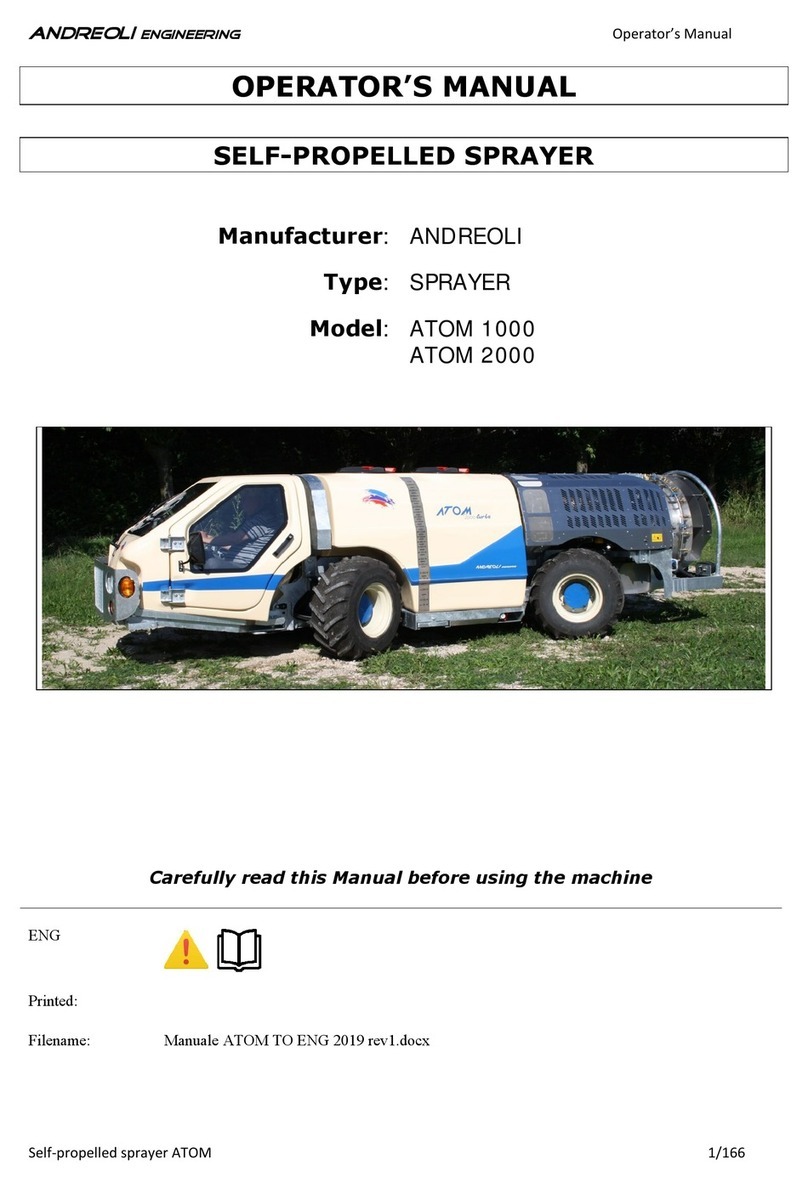
Andreoli Engineering
Andreoli Engineering ATOM 1000 Operator's manual
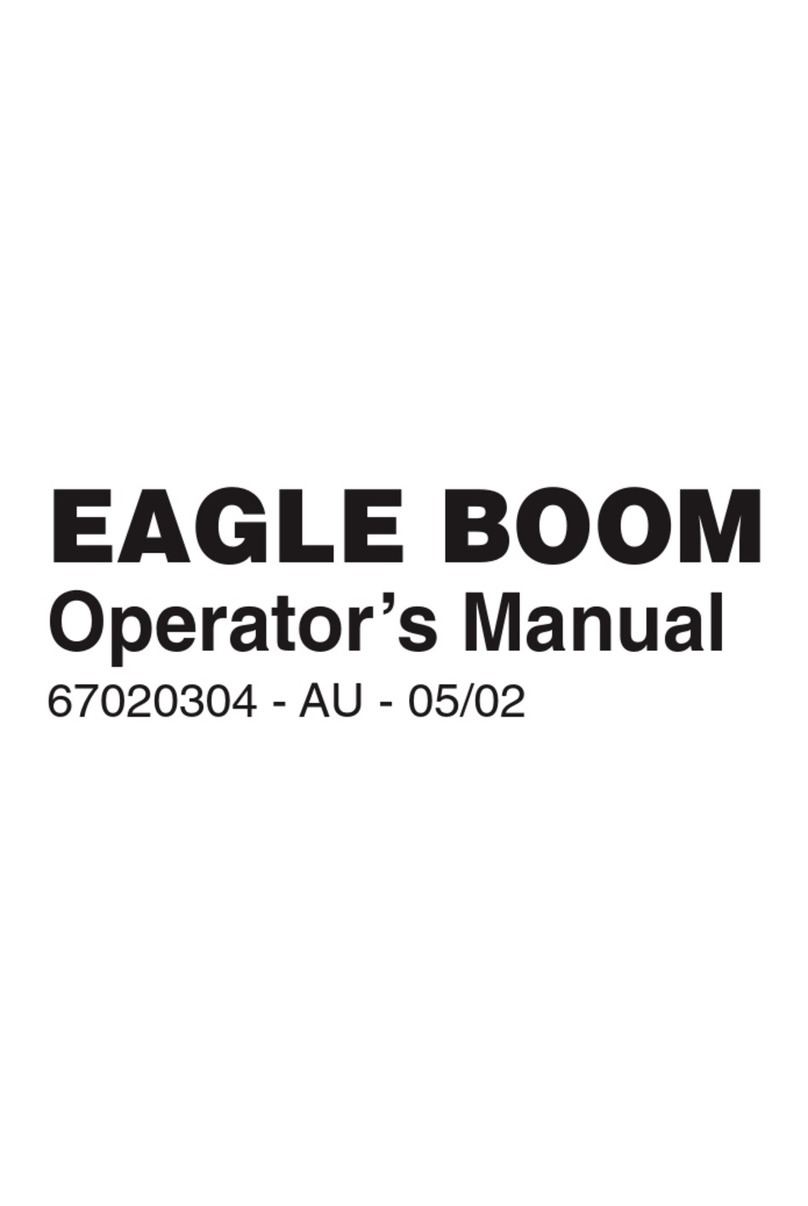
Hardi
Hardi Eagle Boom Operator's manual

wiwa
wiwa HERKULES PFP Operation manual

Graco
Graco Pro Xp 60 AA WB Instructions - parts
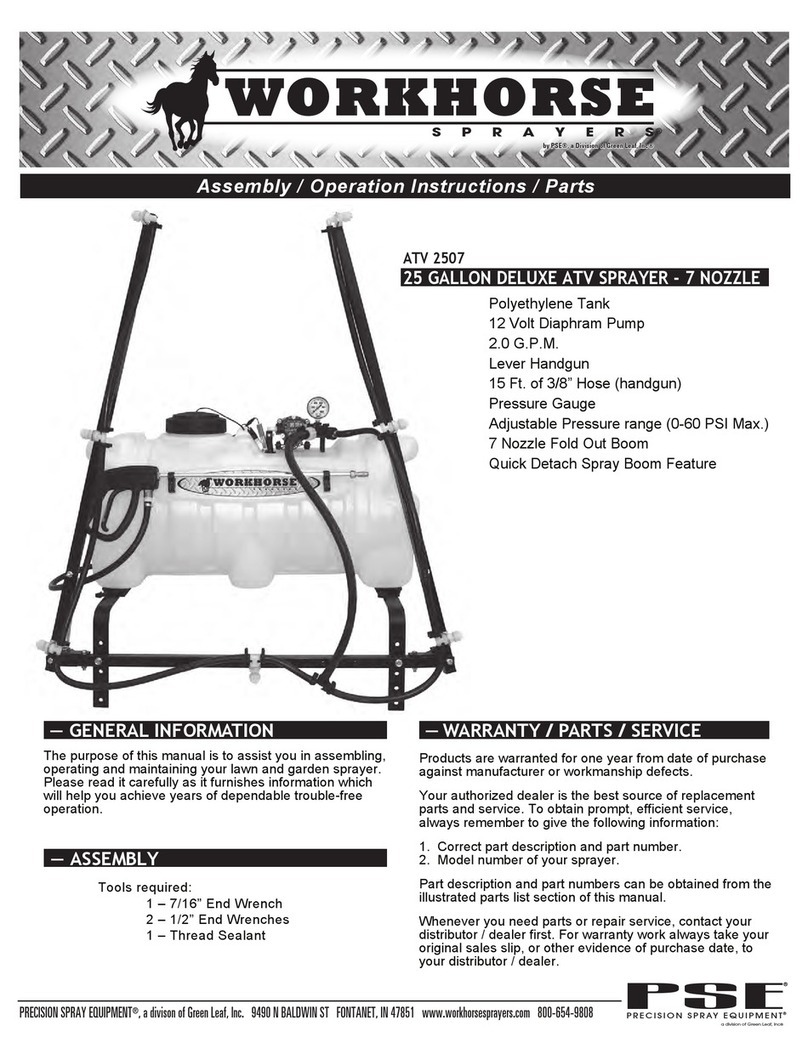
Workhorse
Workhorse ATV 2507 Assembly, operation and parts manual
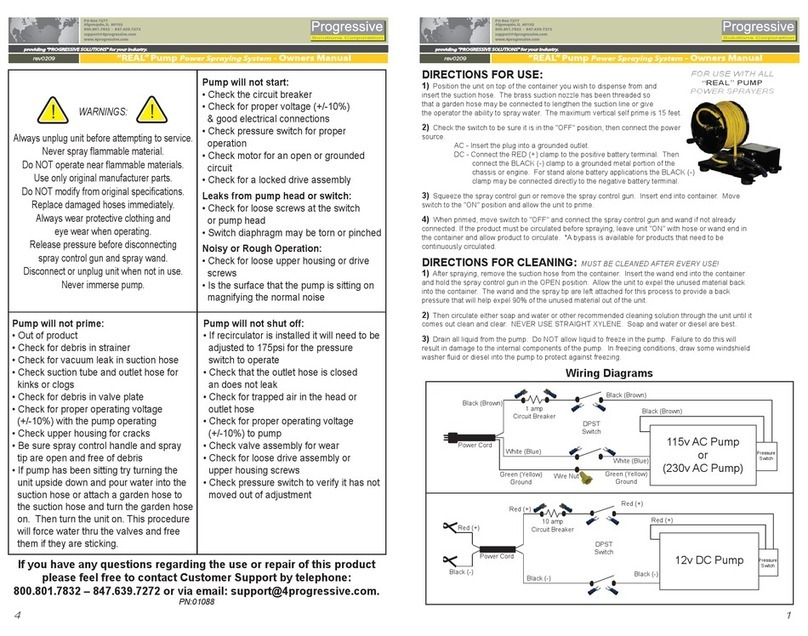
Progressive
Progressive Paint Sprayer owner's manual
